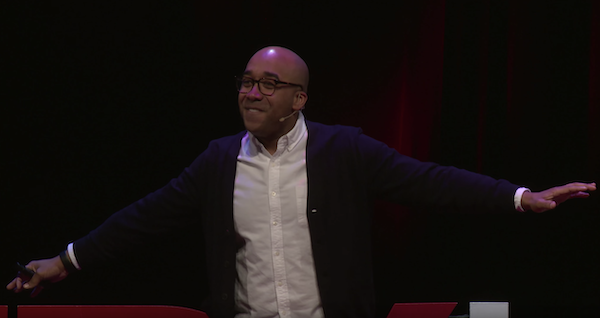Feb 25, 2020
How to Create Culturally Contagious Marketing According to Marcus Collins, Marketing Expert
To create a culturally contagious idea, you must make your idea shareable, credible, reproducible, beneficial, and conversational.
We share more than 2.8 billion communicative nodes a day. Most of what we share is forgotten. A few things like Avatar or Avengers: Endgame, two of the top-grossing movies in the world, reach a wide audience—or “go viral.” Even rarer are ideas that infect the culture. These ideas change our behavior, like growing mustaches for Movember, or impact our language, like saying “on fleek” and “Netflix and Chill.”
Cultural contagion is way more powerful than going viral for marketing, according to Marcus Collins, an award-winning advertiser, marketing expert, and professor at the University of Michigan. Going viral is the spread of a story or information from person to person over a short period of time. Culturally contagious ideas, on the other hand, impact people’s beliefs and behaviors in the long term. These ideas are stronger, more attractive, and more enduring than just your average viral cat-in-a-box meme.
If you want to create your own culturally contagious content, Marcus says your idea should meet these five conditions.
1. Content
Your idea must be built to share. Think shareable content like memes, videos, and songs. Even soda bottles and candy wrappers will work. Coca-Cola put the names of people on Coke bottles and Snickers put different moods on its candy wrappers. People then shared these images on social media, advertising Coke and Snickers, making the idea into an event.
According to Marcus, this cultural content should have four qualities: social currency (makes the person sharing look good), emotion (it provokes wonder, joy, etc), utility (sharing the idea is helpful to others), and story (the content has a story attached like I was in a 7-11 and saw your name on a Coke bottle).
2. Credence
The content must be shared by someone with credence or that people trust. Think Yelp or Amazon reviews that objectively evaluate a product or service. Or think influencers wearing a pair of sneakers, like Kanye who helped popularize Adidas.
To have credence, Marcus says the source should have three things: impartiality (absence of bias), expertise (master of subject matter, fashion, etc), and proximity.
3. Covers
Your content must be reproducible in different iterations without the main message being lost. Think Ryan Adams covering a hit song by Taylor Swift, Facebook resharing your summer holiday as a collage or the Straight Outta Compton meme generator.
4. Complements
In order for content to spread far and wide, the right market conditions must exist. The idea must benefit people in some way. Think of the Ice Bucket Challenge. The idea benefitted research for a cure for M.S. It also showed individuals being generous. People could promote themselves and a bigger cause at the same time, so the idea caught on.
5. Concurrence
Finally, everyone must talk about your idea. The idea must appear ubiquitous. In reality, not every person is talking about your idea, but enough are that the idea seems everywhere. Think how everyone was twerking at one point, talking about Stranger Things, or using fidget spinners.
When you combine these five conditions in a marketing campaign, you have a recipe for cultural contagion. To learn more about how you can make your companies products, services, or brand into a cultural message, contact BigSpeak Speakers Bureau to book Marcus Collins for your next event.
Speaker

 Dr. Marcus Collins
Dr. Marcus Collins